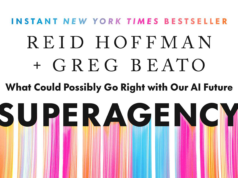Video is eating the internet. It accounts for nearly 75 percent of internet traffic, with Americans consuming more than an hour of online videos each day — more than three times as much as in 2011.
Established platforms like YouTube and Netflix capture a large portion of this traffic, but there also are a number of new players exploiting the video opportunity. Snapchat, Instagram and Facebook, all originally photo platforms, are enthusiastically embracing the video format, and a crop of new video-first platforms like Twitch and Musical.ly are growing exponentially.
As investors, we look for trends that reveal future opportunity. Increased appetite for video led Bessemer to invest in great companies like Twitch, Smule and Periscope. As video continues to grow, we will continue to invest. In understanding where the next opportunity may lie, one question we ask ourselves is: What principles do transformative new video platforms have in common?
Recently, we hosted Spotlight: Video, an event that brought together leaders in online video to help answer this question (and others). Through their perspectives and conversations with up-and-coming video startups, we’ve distilled a set of five principles critical to success in the video space.
While no such list could be comprehensive, and every rule has exceptions, we are excited to contribute our thoughts to the ongoing conversation about the future of the medium.
If your model is driven by user-generated content (UGC), creating a video should take seconds, not minutes
New platforms aspire to have millions of consumers creating and sharing videos in a uniquely compelling way. Most fall short of this goal for one simple reason: It’s incredibly difficult to create an interesting piece of content quickly.
Your platform may have a dazzling array of features that enable creative expression, but if the average user can’t make a great video in 30 seconds or less (ideally a lot less!), chances are they never will. In a world in which tens of thousands of apps compete for consumer attention, reducing the “time to value” (i.e. the time required for a user to create something delightful) is critical.
For example, Snapchat lets you easily record video, string it together and add filters and messages, creating complex content in seconds with a couple of taps, as illustrated by DJ Khaled’s lost at sea story.
Source: DJ Khaled/Snapchat
Video creation is a self-conscious process
The best platforms minimize the social pressure and lower the barrier to creation. Making a video can be a stressful and challenging process — no one wants to make a piece of content that is uninteresting or embarrassing.
Platforms like Twitch and Musical.ly cleverly lower the bar to create. Instead of an intimidating blank video canvas, they give you a simple prompt, such as “record yourself playing your favorite video game” or “lip sync to your favorite song” that makes it easy to produce fun, shareable content. All great video platforms are clever about minimizing self-consciousness.
Fun features like filters, stickers and masks make it easy to create entertaining content. They also encourage “in the moment” content that isn’t meant to be polished.
via GIPHY / Giphy Credit: Jimmy Fallon fallontonight.tumblr.com
Not all platforms are UGC-driven
If your model is driven by power creators, build for them. Our first two principles specifically address UGC platforms, in which a significant portion of users must create and share content for the network to thrive. Not every platform takes this form. Some rely heavily on power creators, a tiny subset of users who spend time and effort to create polished content for the rest of the community to watch and enjoy.
The first step to building a power creator-centric platform is to acknowledge that goal: Platforms can fail by trying to cultivate a UGC network with a product average consumers will never embrace.
Secondly, prioritize attracting power creators from day one by promoting them and enabling them to build, manage and engage a broad audience. Top creators have several platforms to choose from and are thoughtful about where they focus their efforts. A new platform must provide a novel way to engage a creator’s existing audience, enable a direct relationship with fans and deliver significant new viewership. Without these elements, top creators may not be motivated to risk trying a new platform — and without their content, the platform won’t thrive.
Vine was a good example. The challenge of creating a great video within six seconds is difficult. However, some people, like King Bach with more than 16 million followers, are great at it, and Vine did a fantastic job at attracting these power creators to their platform.
Video credit: King Bach, “The Blind Hitman” with Christian DelGrosso , Logan Paul and George Janko
Don’t fill a leaky bucket
Build a platform that can retain customers before focusing on attracting new users. As investors, we’ve witnessed countless examples of platforms that developed a clever viral mechanic that caused traffic to skyrocket, only to come back to earth or even disappear just a few weeks or months later. The reason for this pattern is simple: These companies activate a growth engine (or get some surprise promotion that throws them into growth mode) without first ensuring that the product is compelling enough to retain users over time.
Churn itself is not inherently evil. Even the best platforms see a large number of users try their app and never return. But what distinguishes top platforms is that their user retention cohorts flatten quickly, with at least 20 percent of users engaging every week or month in perpetuity. “Leaky bucket” platforms often see cohorts drop to <5 percent long-term retention over the course of the first few months.
Investing in long-term retention can be a time-consuming and challenging endeavor, and often one that is never fully complete. But platforms that don’t invest in retention from day one risk sudden death: They can show impressive growth numbers, and even attract significant investment, but may not be viable in the long run.
Musical.ly is a good example. They started by building a fantastic video creation experience centered on lip syncing. Had they stopped there, their success might have been flash-in-the-pan. Instead, by focusing on retention from the start, and layering in features to get users returning daily, they created a lasting platform.
Video credit: @officialjoshprice on Musical.ly
Video platforms often start as creation tools
Enduring platforms quickly move beyond creation to become content and social networks. Video platforms often start simply as a tool that enables the creation of a new type of video. The best platforms, knowing that a simple creation tool may not be sufficient to create a highly engaged network, move past this stage and incorporate one of two additional product layers: a content discovery system or a social graph (sometimes both!).
The opportunity to follow friends or influencers, and to consume interesting content even when you don’t feel like creating your own, is the key driver of daily or near-daily usage of top video platforms.
While building effective content discovery and a social graph into a new video platform is much easier said than done, companies that succeed in achieving this goal are more likely to join the ranks of the most valuable platforms on the internet.
Featured Image: Sam Greenhalgh/Flickr UNDER A CC BY 2.0 LICENSE






